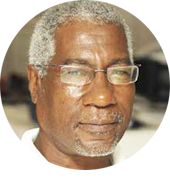
I’VE been to both Taiwan and Hong Kong on official and friendly visits — and can never stop being amazed by the levels of infrastructural development in each city, akin to anything in Beijing or Shanghai.
Taipei and Hong Kong City are today in the midst of the usual political froes with Beijing over the issue of ‘One China’ and ‘One Country, Two Systems’, each case, as always, underlined by external involvement in what China considers its internal affairs – one regarding a Special Administrative Region (SAR), the other involving an island it forever considers part of the mainland.
Differences have always existed in Beijing’s and Taipei’s respective interpretations of both ‘One China’ and ‘Two Systems’ – of late increasingly between China and the United Kingdom (UK) over Hong Kong’s future after the joint 1997 reunification accord; and between China and Taiwan’s current administration following years of closer Cross Strait ties under the previous Taipei administration.
Hong Kong is still in the transition process and the ‘One Country, Two Systems’ mechanism has been proceeding for the past 22 years, alongside continuous efforts by Britain and the US, in particular, to slow-down or reverse the reunification process, seen again in their current open encouragement of and support for the weeks-long violent protests in China’s SAR.
Taiwan, on the other hand, is once again on the path to sure conflict with China over the contentious issue of the insistence by the current Tsai Ing-wen administration on not only maintaining a totally opposite interpretation of ‘One China’ and ‘Two Systems’, but also going the furthest-ever in taking Taiwan closest to possible military conflict with the mainland.
Under President Donald Trump, the US has also gone the furthest in violating and ignoring treaty obligations regarding diplomatic and other forms of recognition of Taiwan and otherwise treating it as an independent nation.
The Trump White House’s recent decision to approve the sale of 66 F-16 American military fighter jets to Taipei has elicited the expected strong response from Beijing, which continues to insist that ‘both sides of the Taiwan Strait belong to One China.’
But things have not always been that way.
During the previous Ma Ying-jieu administration (2008-2016), Taiwan and China maintained their respective different interpretations of ‘One China’, but agreed on common interpretation of the ‘Three No’s’ proposed by Ma to guide resumption of friendly ties: “No Unification, No Independence and No Use of Force’. As a result, Cross-Strait ties reached the highest heights ever, increasing tourism, trade, communication and other relations between Taiwan and China at unprecedented levels.
During those days, I also witnessed the ever-increasing numbers of Taiwanese visiting China’s Fujian Province (from which most of their families originated) and Chinese from as far as Beijing flocking Taiwan hotels by increasing numbers every year.
However, after President Tsai’s Democratic People’s Party (DPP) won the 2016 election over the Kuomintang (KMT) party of outgoing President Ma Ying-jieu, Taiwan immediately started putting Cross-Strait ties back on Deep Freeze and resuming contentious hot issues put on the back burner during Ma’s reign, with Taiwan-China ties now guided by a new set of ‘FOUR NOs’.
Even before President Trump entered the White House in January 2017, he’d sent strong signals — from the campaign trail through the transition period — that he’d be rattling with China over Taiwan, first indicating he would invite President Tsai to his inauguration and only backing-off after being convinced it would be an early violation of at least three US-China treaties that recognize the ‘One China’ represented by Beijing.
Since then, Trump has taken every opportunity to annoy and anger China over Taiwan.
But the decision to approve the sale of the fighter jets to Taipei beats all previous actions by the Trump White House.
China insists on keeping America out of Taiwan’s land, air and sea spaces. But the Trump White House has clearly decided to brush aside the late Obama-era policy of Washington not encouraging Taipei to rock the Cross Strait boat with expectations of US military support.
Therefore, the impending China-US clash over the fighter jet sales to Taiwan will certainly inflame tensions, not only in the Taiwan Strait, but in the wider South China Sea, where Washington is doing everything to encourage largely unwilling allies to establish a joint anti-China military alliance in the area, which would also allow the US to deploy American missiles (along with more naval warships, aircraft and troops) in that part of Asia, in the name of ‘countering China’s influence’ in a sea named after it.
To Be Continued.










